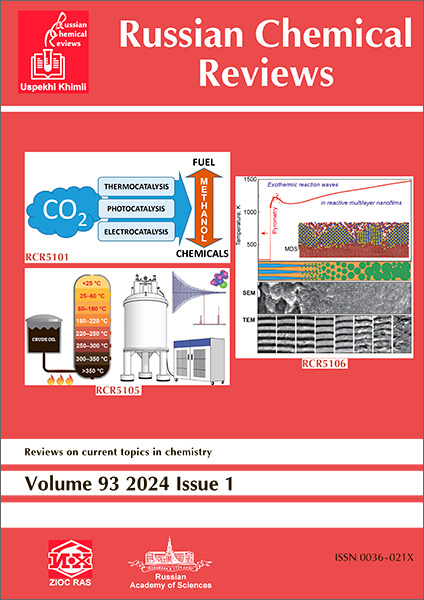含氟钌基烯烃分解催化剂
IF 6
2区 化学
Q1 CHEMISTRY, MULTIDISCIPLINARY
引用次数: 0
摘要
综述了在不同配体中引入氟原子和氟烷基构建具有合成活性的碳钌配合物的方法的文献资料。分析了氟化配体对配合物催化活性的影响。NHC配体中氟化取代基的选择、结构和位置通常是由希望增加钌原子的亲电性决定的,因为氟原子和氟烷基的吸电子效应,通常导致钌配合物的活性增加。在具有不对称含氟NHC配体的催化剂中,有可能存在额外的Ru-F配位,使配合物更稳定,从而更有活性。由于钌-杂原子键的减弱,在螯合烷基烯配体中氟的存在增加了催化剂的引发率。此外,在配体中引入多氟烷基,解决了使用含氟双相体系进行催化剂回收再利用的问题。参考书目包括172篇参考文献。本文章由计算机程序翻译,如有差异,请以英文原文为准。
Fluorine-containing ruthenium-based olefin metathesis catalysts
The review summarizes literature data on the methods for the introduction of fluorine atoms and fluoralkyl groups into different ligands to construct metathesis-active ruthenium carbene complexes. It also analyzes the influence of fluorinated ligands on the catalytic activity of the complexes. The choice, structure and positions of fluorinated substituents in NHC ligands are generally dictated by the desire to increase the electrophilicity of the ruthenium atom due to the electron-withdrawing effect of fluorine atoms and fluoroalkyl groups, resulting, as a rule, in an increase in the activity of the ruthenium complex. In catalysts with unsymmetrical fluorine-containing NHC ligands, there is a possibility of additional Ru–F coordination, making the complexes much more stable and, consequently, more active. The presence of fluorine in chelating alkylidene ligands provides an increase in the catalyst initiation rate due to a weakening of the ruthenium – heteroatom bond. Besides, the introduction of polyfluoroalkyl groups into ligands solves the problem of catalyst recovery using fluorous biphasic systems for reuse. The bibliography includes 172 references.
求助全文
通过发布文献求助,成功后即可免费获取论文全文。
去求助
来源期刊

Russian Chemical Reviews
化学-化学综合
CiteScore
13.00
自引率
5.20%
发文量
27
审稿时长
6-12 weeks
期刊介绍:
Russian Chemical Reviews serves as a complete translation of the esteemed monthly review journal Uspekhi Khimii, which has been a prominent figure in Russian scientific journals since its establishment in 1932. It offers comprehensive access to the advancements made by chemists from Russia and other former Soviet Union countries.
Established in 1932, Russian Chemical Reviews is committed to publishing timely and significant review articles encompassing various facets of modern chemistry, including chemical physics, physical chemistry, computational and theoretical chemistry, catalysis, coordination chemistry, analytical chemistry, organic, organometallic, and organoelement chemistry, chemistry of macromolecules, applied chemistry, biochemistry, bio-organic chemistry, biomolecular chemistry, medicinal chemistry, materials chemistry, nanochemistry, nanostructures, and environmental chemistry.
 求助内容:
求助内容: 应助结果提醒方式:
应助结果提醒方式:


